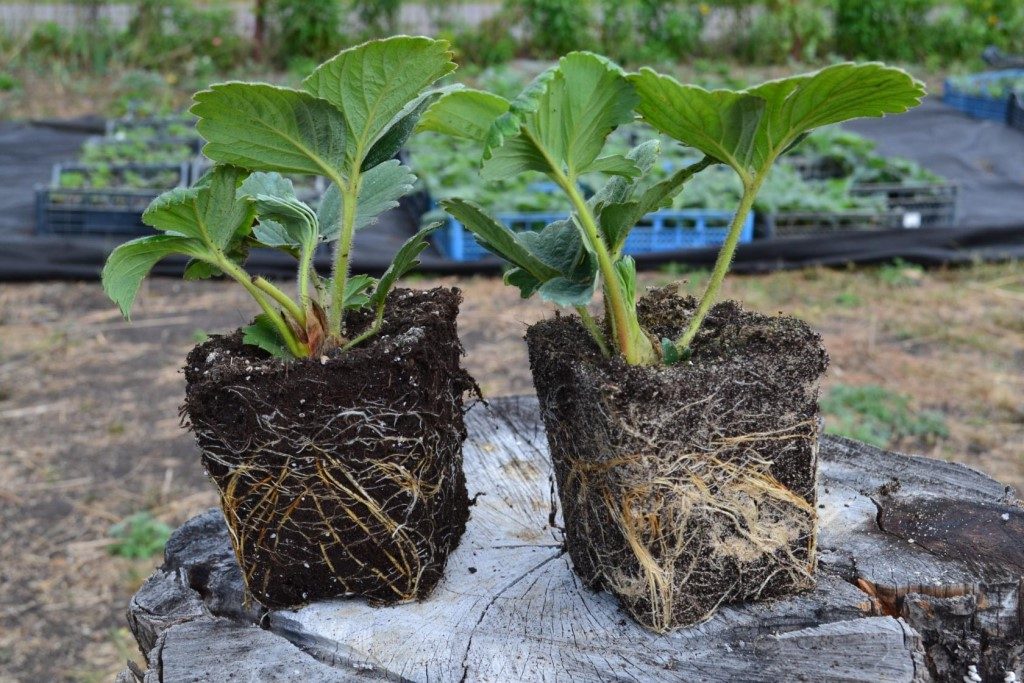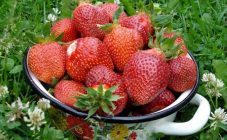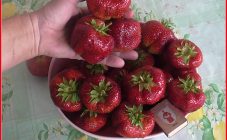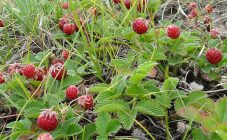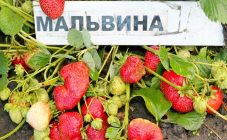Content:
Strawberries are the most popular berry grown in the garden. It is not only tasty, but also contains many useful vitamins. This berry has many varieties that differ in taste and growth characteristics. One of the more popular strawberry varieties will be Mashenka. The variety appeared in 1953. It was bred by the breeder Smolyaninova N.K., by crossing the Komsomolskaya Pravda variety and the Krasavitsa Zagorya hybrid. Today this species can be seen with the name Moscow Jubilee Garden Strawberry.
Characteristics and features of the variety
Strawberry Mashenka stands out for its taste and aromatic smell, unpretentiousness in care and appearance.
Strawberry Moscow anniversary variety description:
- Early ripe variety - fruits ripen in early June;
- Powerful yet compact bush with dark green leaves;
- Inflorescences tend to form into one flower. The flowers are white with a yellow center;
- The berries are claret-scarlet, large, the weight of the first fruits is 100-120 gr. The following berries are smaller, the minimum weight is 30-40 grams. From one bush - 800-1000 gr. berries;
- Will give a re-crop under good weather conditions and proper care;
- It tolerates transportation well,
- Average frost resistance (withstands up to -16 ° С);
- Average perfection;
- The variety is resistant to diseases and pests;
- Fruiting - 4 years.
The berries are comb-shaped, large and sweet. Excellent appearance increases marketability.
The variety is early, therefore, already in early June, you can start harvesting. In very hot summer, it bears fruit again in August, but the fruit is slightly smaller.
The bushes are strong, up to 45 cm high. The leaves stretch upward, which is why they give an average spreading and compactness.
Agricultural technology of cultivation
To grow strawberries, you must first prepare the ground. Preparation is made at least two weeks in advance. The earth is dug up, treated with insecticides from the larvae. Then a ridge is formed, and humus (10 kg per 1 m²) and sand (5 kg per 1 m²) are introduced into the soil.
Strawberry Jubilee loves airy soils through which its roots can breathe well.
The transplant is carried out in early May or August. You can use purchased seedlings, or you can self-prepared planting material.
To get a mustache and transplant them into a new ridge on your own, you need to choose the most fruitful bushes, the first rosette of strong mustaches is taken from them. It is important that the bush is healthy. The socket needs to be twisted and poked so that it takes root, and the rest of the mustache must be trimmed.
The seedlings will be ready in a few weeks and are moved to a new bed. The rooted rosettes are separated from the mother bushes, lowered into the holes, but so that the roots do not bent upward, and the bud is above the ground. After moving, the rosette is watered.
Cutting the whiskers and separating the rosettes provide not only planting material, but also greatly facilitate the growth of the plant.
Growing seedlings from seeds is a more laborious process. In a container for seedlings, garden soil, peat, vermiculite are mixed in equal proportions. Seeds are dropped in them, watered, covered with foil and exhibited in a warm, bright place. The room temperature must be at least 18 ° C. The seedlings will germinate in about 8-12 days, but you do not need to remove the film until they get stronger.
Transplanting seedlings into the ground will come as soon as they grow up to 12 cm, and there will be 5-6 leaves on them.
Strawberry seedlings are planted on the ridge in June-July in holes 10 cm deep (maximum 12 cm).
Rosettes of seedlings move into holes of the same depth with an interval of 45 cm between them.
It is advisable to plant both types of seedlings in cloudy weather.
Although this variety has good survival rate, careful care is still required:
- Watering should be done in the morning, until the sun bakes strongly;
- Bare roots must be buried in earth;
- Weed out weeds;
- Remove unnecessary mustache;
- Loosen the soil on the ridge so that air flows to the roots;
- During the flowering period, the soil under the bushes should be mulched with hay and needles.
After the harvest is harvested, the Moscow Jubilee strawberry still requires care, because during this period the buds are laid for the next fruiting season. How good it will be will depend on leaving. Need to:
- It is imperative to cut off old leaves without damaging the central hearts of the bush and still green branches;
- Loosen the soil by hilling the bush;
- Feed with mineral fertilizer containing trace elements;
- Moisten the tops of the bushes.
Simple, but at the same time very useful strawberry care will contribute to good subsequent yields and the development of the bush and root system.
After wintering, the bushes are treated with antifungal drugs for prevention. Diseased plants are not treated, it is better to remove and process the soil after them.
Apply nitrogen fertilizers with caution, as strawberries begin to fatten and increase leaf growth, but will reduce the number and size of fruits. It is better to feed with phosphorus-potassium fertilizers after the snow melts and organic when the bushes begin to bloom.
Advantages and disadvantages
This variety has earned only positive reviews from gardeners and popularity in markets and gardens.
Strawberry Masha has a number of advantages, for which it is so popular among gardeners and amateurs:
- Taste qualities;
- Appearance;
- Disease resistance;
- Large berries;
- High commercial properties.
From the shortcomings, sensitivity to low temperatures that freeze the plant, and to long exposure to the scorching rays of the sun, which burn the foliage, is highlighted. But with proper care, you can avoid the unpleasant consequences of cold snaps or the scorching sun. The berries need to be covered overnight if there is a threat of a drop in temperature and light shade should be made in the scorching sun.
In terms of taste and size of berries, this variety is confused with the anniversary Govorova strawberry. But Govorov's strawberry, although similar to Mashenka, was bred much later.
Masha strawberry fully complies with the description on the package, gives the same juicy and sweet large berries, as in the picture of the package for seeds. With proper care and good weather conditions, the crop can be harvested twice.

